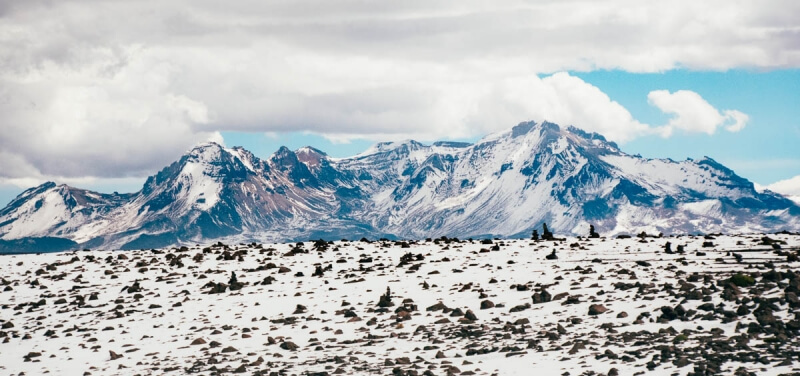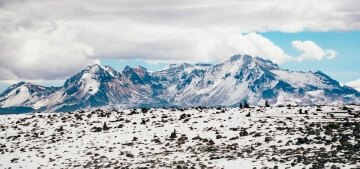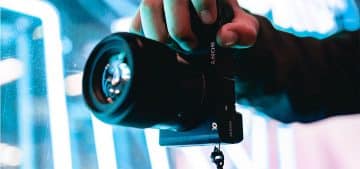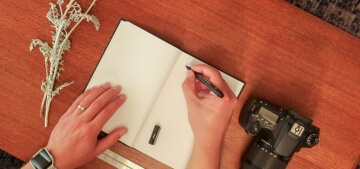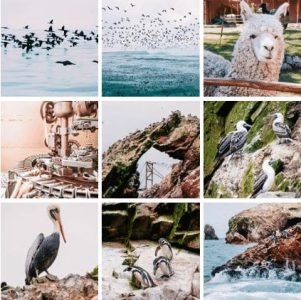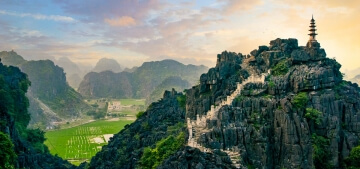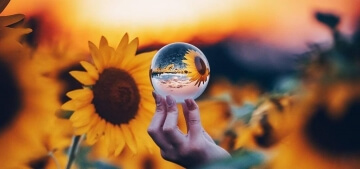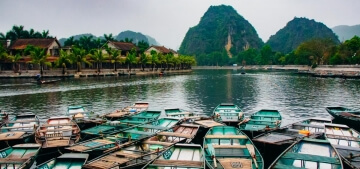So you’ve got your Fuji camera and are putting together the ultimate travel kit. Don’t worry we’ve got you covered with this list of the best Fuji lenses for travel.
Mirrorless systems like Fujifilm are great for travel because they are just smaller than traditional DSLRs. Most travelers eventually tire of carrying the full weight of a DSLR while on the road, and switch to Sony, Fuji, Olympus or Panasonic cameras.
I definitely did. I used to shoot with a Canon 70d and eventually it was just too heavy and bulky. There are a lot of ways to travel, and some peeps are happy to carry extra bags with all their gear but I prefer to travel with a small, minimal and affordable kit. Which is mostly what I’ll be covering here.
How to Choose Travel Photography Lenses
When picking a travel photography lens, what you’re looking for the least amount of gear that gives you the most versatility. With Fuji, you know you’re getting great quality lenses, so it’s just a matter of picking the size and style you want. Let’s break that down by looking at some of the key things that play into this.
Weight
If you’re a pro carrying a case of insured gear, sure the weight doesn’t matter. For most of us mere mortals, we’re traveling with everything in a carry-on bag, so smaller and lighter is key.
I never check my gear in because I don’t trust that it will end up at the other end safe and intact. I’d be pretty crushed if my stuff showed up damaged at the destination.
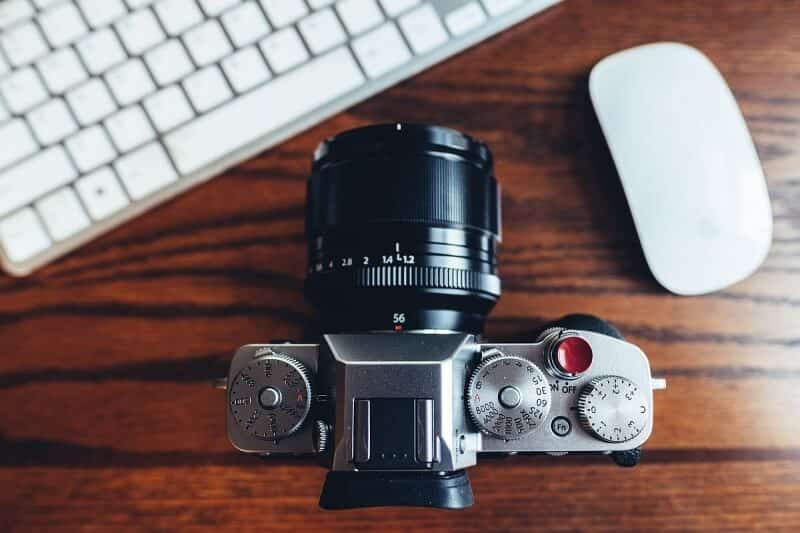
Also, I’ve always found that when people get gear that’s too big and heavy, they’re just less likely to carry it and use it as often. And frankly that’s the worst thing you could do for your photography – not shoot regularly.
So think hard about what makes the right kit for you. Consider the weight of each lens and what images it helps you create. Just as with cameras, the best lens is the one you’ll have on you when the moment arises.
I tend to carry about 3 lenses when I travel, but on any specific day trip, I would just choose 1 or 2 lenses to actually use.
Size
A lot of times people buy a smaller camera for its size, but then go ahead and pick lenses that are super heavy and large. You kinda defeat the purpose of a smaller camera if the lenses are huge. So it’s important to also take the lens’ size into consideration as well.
Size is important – because some days you’re just not going to want to carry that heavy camera after days of travel and an aching neck.
Not to mention, when you’re trying to be inconspicuous and not intimidate your subject, it can really help to have a smaller camera. This can be especially important if you do much street photography.
Focal Length
The focal length of a lens changes the kinds of shots you can take. If you’re shooting wildlife from a distance, a good zoom lens is key.
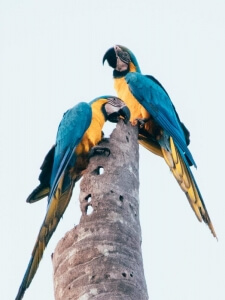
On the other hand, if you’re into landscapes, you’ll want a good wide angle lens to get it all in. You should select lenses to match the style of photography you’re interested in.
Aperture
A wide aperture is ultra desirable for blurry backgrounds that let you isolate your subject as well as the capacity to shoot in low light, or even do astrophotography.
Just be careful, when you use a wide aperture, your depth of field is very narrow and it’s quite easy to miss focus.
I love capturing moments in natural light, the intimacy and softness of the light can’t be beat.
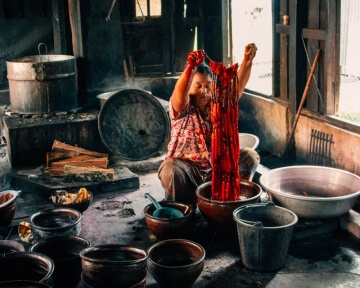
But a wide aperture often comes with a hefty price – either in the cost of the lens or the weight. A fast prime is one way to get a wide aperture in a small lens for cheap.
This is one of those features you’ll have to make the right trade-off for you.
Best Fuji Lenses for Travel
So let’s go over the best Fuji lenses you might want to pack on your next trip. You’ll want to pick just one or two to match your style of photography.
This post has affiliate links. As an Amazon Associate I earn from qualifying purchases. The opinions presented are my own.
These are the best Fujifilm lenses for travel photography:
Fuji XF 18-55mm f/2.8-4
The Fuji 18-55mm lens makes a great walkaround lens, which is great to get a range of shots from landscapes to details. For travel, this is really handy because you often don’t know what you’re going to be shooting. In a studio environment, you can always plan ahead but not when you’re visiting a new place for the first time.

Buy Fuji XF 18-55mm f/2.8-4 Now
With the aperture of f/2.8, it’s also one of the faster kit lenses. Most kit lenses are not as wide and it costs a pretty penny to upgrade it to something faster.
The other awesome feature of this lens is that it has OIS or Optical Image Stabilization. That will give you a couple stops stabilization which is useful when you don’t carry your tripod.
Note, with the crop factor of 1.53, this lens is effectively a 27-54mm lens.
Remember the crop factor for Fuji crop sensors is 1.53
The Fuji kit lens is a well-made metal lens, unfortunately that means it’s not super light at 310g but it’s also not too bad for the speed and focal range.
Fuji XF 55-200mm f/3.5-4.8
The next lens you might want to look at for travel is a telephoto. The walkaround we talked about before is not going to be the best on safari for example. But this telephoto will get you those gorgeous closeup shots of wildlife and birds.

Buy Fuji XF 55-200mm f/3.5-4.8 Now
Telephotos can also be good for portraits because the narrow depth of field can blur the background more effectively. So if you enjoy making portraits while traveling that might be something to consider.
At 580g, this is a rather heavy lens. If you don’t really intend of shooting wildlife or portraits, maybe think again! This might be one to pass on in favor of something else you might use more often.
But again, this is where you get to decide what’s important for you, or what your style is. If you’re more of a landscape buff, there might not be too many situations when you use this one.
Fujinon XF 27mm f/2.8
Next one up is a lowlight prime, which is also a pancake lens. This thing is tiny and light as a feather at 78g. You’ll barely know you have it on your camera, which is excellent for taking it everywhere.
It’s great for those evenings where you’ve just met a bunch of cool people at the hostel and are sharing an awesome moment around a bonfire sharing stories. Or wandering the city at blue hour just capturing the feel of the moment.
If you’re into street photography, this is a very unassuming lens to have on your camera. You’ll be discreet and avoid scaring your subjects with a huge lens pointed at them.
Fujinon XF 23mm f/1.4
The upgrade lowlight prime would be this fast lens. At f/1.4, you’ll get much narrower depth of field and creamier bokeh more easily.
It’s more expensive at around $800 but it’s just an amazing lens. Image quality is gorgeous and sharp. The bokeh is lovely and at f/1.4 is easy to fine. The focus is fast and accurate on the 3rd gen XTrans AF. It’s also not too heavy at just 300g.
This lens works out to be a 35mm prime which makes it a perfect walkaround prime. It’s a wonderful focal length for everyday shooting and just takes excellent photos. If there’s one lens to splurge on in this lineup, this would be it.
Want to treat yourself? Just go ahead. Buy it.
Fujinon XF 10-24mm f/4
I love ultrawide angle lenses because they really let you step into the scene. These are lenses that are wider than 24mm (assuming full frame equivalent). They are just the thing for landscapes, especially where you have some foreground interest and a blowout background.
You get to the spot where everyone’s shooting the same scene, but your shot will just stand out, look different.
Because of the wide angle, you’re not going to get a narrow depth of field, so most of the scene will be in focus. This can make for amazing deep focus.

Buy Fujinon XF 10-24mm f/4 Now
This lens comes with image stabilization which compensates for it’s slower aperture. IS really helps if your subject isn’t moving much so for landscapes, which is mostly what you’d be using this lens for. So even though f/4 isn’t great, the image stabilization will really help you out.
This lens is a midrange lens pricewise, and is about average weight at 300g.
Rokinon 12mm F2.0
If your budget’s too tight for the zoom ultrawide, consider this ultrawide prime. Now it’s a bit of an advanced maneuver because it’s got no autofocus.
You have to use manual focus on this one, but because it’s so wide, it’s not too hard to have most of the scene in focus anyway.
In addition, there will be no EXIF information in the images and you’ll have to set up the camera to work properly with a manual only lens. There are just no electronics in the lens so your camera will not recognize it.
That said, it’s actually a fantastic and fun lens and pretty compact at 260g.
What’s the difference between Rokinon and Samyang? There isn’t one, those are just two different badge names for the same lenses. This lens sells under the name Samyang as well.
Summary of the Best Fuji Lenses for Travel
So there you have it, these are some great Fujifilm lenses that should cover your needs as you travel. Pick the right combo and you should be able to get the shots you need and come back with some great souvenirs.
So now I’ll summarize all these lenses and then you can go about putting together your selection. You obviously don’t want all of them, just the ones that suit your style.
| Type of Lens | Lens | Cost | Weight |
|---|---|---|---|
| Walkaround Zoom | Fuji XF 18-55mm f/2.8-4 | $$ | 310g |
| Telephoto Zoom | Fuji XF 55-200mm f/3.5-4.8 | $$ | 580g |
| Lowlight Prime | Fujinon XF 27mm f/2.8 | $ | 58g |
| Lowlight Upgrade | Fujinon XF 23mm f/1.4 | $$$ | 300g |
| Ultrawide Zoom | Fujinon XF 10-24mm f/4 | $$$ | 300g |
| Ultrawide MF Prime | Rokinon 12mm F2.0 | $ | 260g |
How Many Lenses Should I Carry?
Well that really depends on you, but what I recommend is that you think about it ahead of time. Often it’s so much fun accumulating lenses, that people don’t think about how many they would actually carry with them on a trip.
Don’t buy a lens that you’re unlikely to have on you when the rare moment arises – you won’t end up using it.
For e.g. say you buy a macro lens because you’ve seen some great shots of unusual bugs. Well, are you making special trips for unusual bugs? If not, are you carrying that lens all the time on the off-chance you come across one? If your answer is no to both those questions, it’s unlikely that you will use that lens much.
So with that in mind, here are some solutions.
Two Lens Solution
2 lenses is a great way to have something versatile that fits your style. For e.g. you could take the kit lens as a walkaround and improve on that with a zoom lens for wildlife and portraits.
When you do this, consider the weight of the combinations. Here are some example combos, and their weights, that you could put together.
| Shooting Style | Lenses | Weight in g |
|---|---|---|
| Wildlife Shooter | The Kit and a Telephoto | 890g |
| Landscape Shooter | The Kit and Ultrawide Prime | 610g |
| Lowlight Lover | The Kit and Lowlight Prime | 610g |
Final Words
Travel Photography is super fun and I always say, it’s not about the gear. It’s about learning the skills and being there.
If you want to be a better photographer, stand in front of more interesting stuff. – Jim Richardson
But it’s also good to have a few good tools that will serve you well.
I hope you found some lenses on here that will take your travel photography game to the next level.
Here’s a quick link back to the table of lenses 🠖 Best Fuji Lenses for Travel
Thanks for reading!
This post has affiliate links. As an Amazon Associate I earn from qualifying purchases. The opinions presented are my own.
